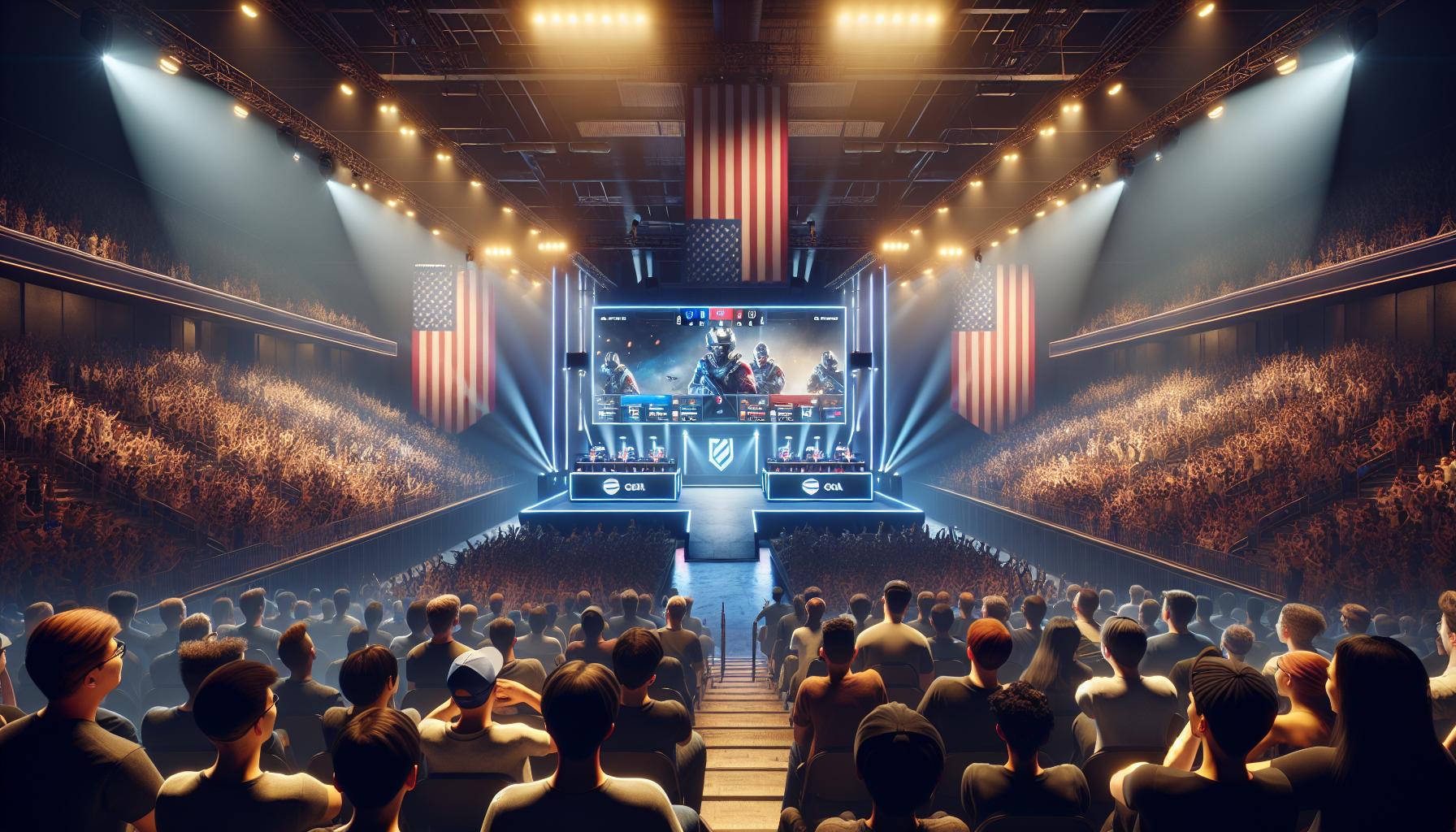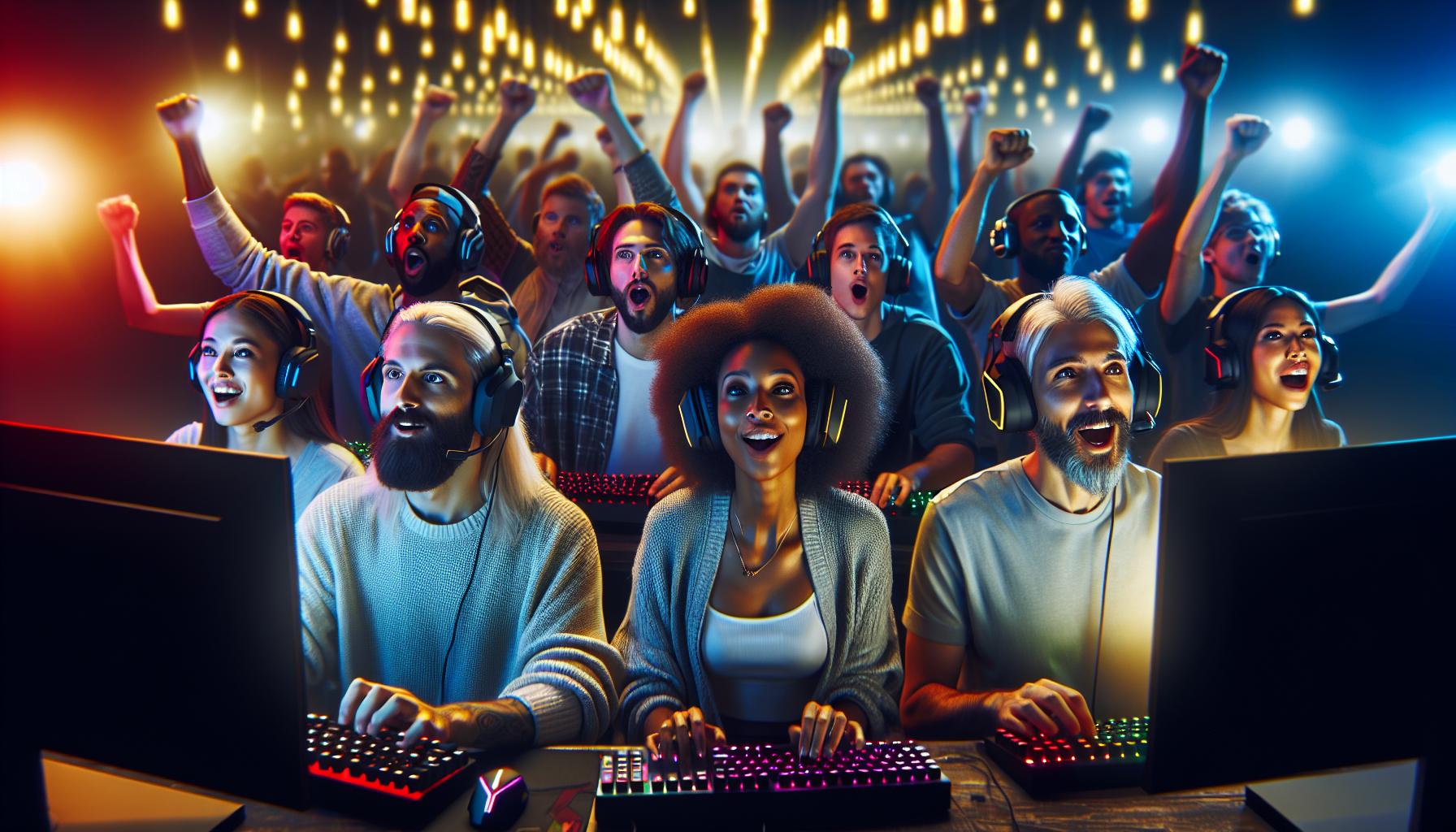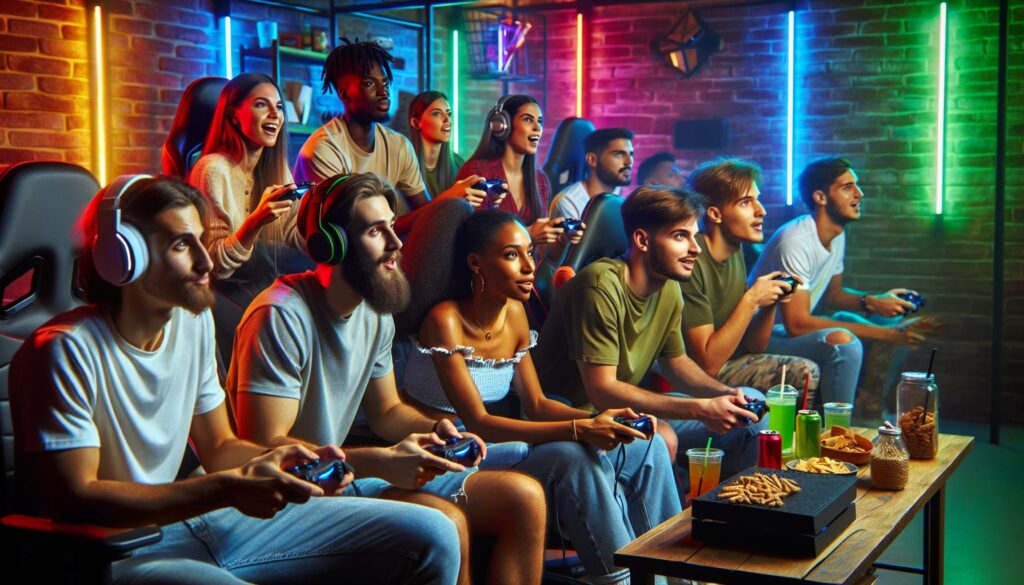Gaming has evolved from a niche hobby into a cultural phenomenon that shapes American entertainment, social connections and even career choices. From the early days of arcade machines to today’s immersive virtual worlds, video games have become deeply woven into the fabric of American society.
The Gaming Culture in America represents a vibrant ecosystem worth over $85 billion annually, attracting players across all age groups and demographics. It’s not just about entertainment anymore – gaming has transformed into a legitimate professional pursuit with esports tournaments drawing millions of viewers and offering prize pools that rival traditional sports. This digital revolution has created new communities, career opportunities and ways of connecting that previous generations couldn’t have imagined.
Gaming Culture in America
Gaming transformed American entertainment culture through technological advancements, social connectivity and market expansion over five decades. The journey from simple pixel games to immersive virtual experiences reflects broader changes in how Americans consume and interact with digital media.
From Arcade Halls to Living Rooms
The arcade era of the 1970s marked the first major gaming boom in America. Pinball machines populated diners, bowling alleys and dedicated arcade halls, creating social hubs for gaming enthusiasts. Space Invaders generated $500 million in revenue by 1979, establishing gaming as a profitable entertainment sector. Pac-Man’s release in 1980 brought 100,000 arcade cabinets to American venues, generating $1 billion in quarters during its first year. These early gaming spaces fostered competitive communities through high score challenges, tournaments and social gatherings.
The Rise of Home Console Gaming
The introduction of home gaming systems revolutionized American entertainment in the 1980s. The Atari 2600 sold 30 million units, bringing gaming directly into American households. Nintendo’s entry into the market in 1985 expanded gaming’s reach with the Nintendo Entertainment System, selling 34 million units in North America. Sega emerged as a major competitor, capturing 65% of the 16-bit console market share by 1992. This period established gaming brands, franchises and characters that remain cultural icons today, such as Mario, Sonic and The Legend of Zelda.
Gaming Demographics and Social Impact

The gaming landscape in America encompasses diverse age groups gender identities ethnic backgrounds. Recent studies by the Entertainment Software Association reveal 75% of American households include at least one gamer with an average age of 35 years.
Breaking Traditional Stereotypes
Gaming demographics have shifted dramatically from the traditional young male stereotype. Women now represent 45% of U.S. gamers according to industry research firm Newzoo. Players aged 50 and above make up 21% of the gaming population engaging primarily in mobile puzzle strategy games. The professional gaming scene reflects this diversity with prominent figures like Dominique “SonicFox” McLean Katherine “Mystik” Gunn breaking barriers in competitive gaming.
| Demographic | Percentage |
|---|---|
| Female Gamers | 45% |
| Gamers 50+ | 21% |
| Mobile Gamers | 63% |
- Twitch streams attract 31 million daily viewers creating interactive entertainment spaces
- Reddit gaming communities unite 50 million monthly active users sharing strategies news
- Esports tournaments generate 495 million viewers annually building global competitive networks
- Gaming conventions like PAX E3 draw 250000+ attendees facilitating face-to-face connections
- Online multiplayer games average 3 hours of social interaction per gaming session
The Esports Revolution

Esports transformed competitive gaming into a professional industry worth $1.8 billion in 2023. The rise of professional gaming leagues, high-stakes tournaments, and dedicated streaming platforms created a new entertainment ecosystem that rivals traditional sports.
Professional Gaming as a Career
Professional gamers earn income through multiple revenue streams: tournament winnings, sponsorship deals, streaming subscriptions, and team salaries. Top esports athletes command annual salaries exceeding $500,000, while popular streamers generate millions through platform revenue sharing and brand partnerships. Major esports organizations like Team SoloMid, Cloud9, and 100 Thieves provide structured career paths with benefits including healthcare, retirement plans, and performance bonuses. Gaming academies and collegiate esports programs offer specialized training programs that develop competitive skills, business acumen, and industry connections.
Major Gaming Events and Tournaments
North American esports events attract massive audiences through both in-person attendance and online viewership. Here’s a breakdown of major tournaments and their impact:
| Tournament | Prize Pool | Peak Viewers | Location |
|---|---|---|---|
| League of Legends LCS Finals | $200,000 | 380,000 | Los Angeles |
| The International NA Qualifiers | $1.5M | 425,000 | Seattle |
| Call of Duty League Championship | $2.5M | 280,000 | Various US Cities |
These events feature professional production values, dedicated venues, and extensive media coverage. Tournament organizers partner with major brands like Intel, Mercedes-Benz, and Red Bull to create immersive fan experiences. Regional qualifiers feed into international championships, establishing clear competitive pathways for aspiring professionals.
Gaming’s Influence on American Media

Gaming transformed American media consumption patterns by integrating interactive entertainment across multiple platforms. The convergence of gaming with traditional media created new forms of content production distribution.
Streaming Culture and Content Creation
Gaming streams on platforms like Twitch generate 2.8 billion viewing hours quarterly through 7.5 million unique content creators. Top streamers like Ninja maintain dedicated audiences exceeding 18 million followers while earning $500,000 monthly through subscriptions sponsorships donations. Gaming content dominates YouTube with 40 billion annual gaming-related video views across 80 million gaming channels. Live streaming platforms incorporate interactive features such as chat polls channel points viewer rewards to enhance audience engagement. Content creators leverage multi-platform strategies by repurposing streams into YouTube videos TikTok clips Instagram highlights.
Gaming in Movies and Television
Hollywood embraces gaming intellectual property through successful adaptations like HBO’s “The Last of Us” which attracted 4.7 million viewers per episode. Netflix produced 15 gaming-based shows in 2023 including “Arcane” “Castlevania” “Cyberpunk: Edgerunners.” Major film studios invested $380 million in gaming adaptations generating $1.2 billion in box office revenue. Television networks feature competitive gaming programming through partnerships with ESL DreamHack Major League Gaming. Gaming references appear in 30% of prime-time television shows reflecting mainstream cultural integration. Reality shows focus on gaming competitions esports teams content creation featuring prominent gaming personalities.
The Economic Impact of Gaming
The gaming industry generates $214.2 billion in global revenue for 2023, with the U.S. market contributing $85.9 billion. This significant economic footprint continues to expand through technological advancement, market diversification and consumer engagement.
Job Creation and Industry Growth
The gaming industry creates 428,000 direct jobs across the United States, with an average salary of $121,000. Major gaming publishers like Electronic Arts, Activision Blizzard and Take-Two Interactive employ thousands of professionals in roles such as game developers, designers, artists and quality assurance specialists. Small indie studios contribute 32% of industry employment, creating innovative titles with teams of 5-20 people. Support sectors including marketing agencies, esports organizations and gaming hardware manufacturers generate an additional 185,000 jobs. The industry’s 9.3% annual growth rate outpaces most traditional entertainment sectors.
Gaming’s Role in Digital Innovation
Gaming companies drive technological advancement through investments in artificial intelligence, virtual reality and cloud computing infrastructure. The industry spends $12.4 billion annually on research and development, creating breakthroughs in graphics processing, network optimization and user interface design. Major tech innovations include ray tracing technology, which improves visual realism, cloud gaming platforms that reach 387 million users and advanced motion capture systems used across entertainment industries. Gaming engines like Unreal and Unity power applications in architecture, medical training and automotive design. The gaming sector’s technological developments generate $8.6 billion in patent licensing revenue annually.
Gaming Culture Controversies
Gaming’s cultural impact sparks ongoing debates about its effects on society, mental health, behavior. The gaming industry faces scrutiny from healthcare professionals, lawmakers, parents regarding various concerns.
Addressing Gaming Addiction
The World Health Organization classified Gaming Disorder as a mental health condition in 2018, affecting 3-4% of gamers worldwide. Studies indicate that excessive gaming correlates with decreased academic performance, disrupted sleep patterns, social isolation. Mental health professionals recognize specific symptoms: loss of control over gaming habits, prioritizing gaming over daily responsibilities, continuation despite negative consequences. Treatment centers across America offer specialized programs for gaming addiction, combining cognitive behavioral therapy with digital detox protocols. The American Psychiatric Association reports a 30% increase in gaming-related mental health consultations between 2019-2023.
Debates Over Gaming Content
Violence in video games remains a central topic in public discourse, with 71% of parents expressing concerns about gaming content. The Entertainment Software Rating Board (ESRB) rates games based on content indicators including violence, language, sexual themes. Research from Stanford University reveals that 65% of top-selling games contain some form of violent content. Microtransactions generate controversy, with players spending an average of $76 monthly on in-game purchases. The Federal Trade Commission actively monitors predatory monetization practices in games targeted at minors. Content moderation challenges persist in online gaming communities, where toxic behavior affects 57% of players.
American Society and Gaming
Gaming Culture in America has fundamentally reshaped American society beyond mere entertainment. Its economic prowess coupled with technological innovation continues to drive significant societal changes. While challenges like gaming addiction and content concerns persist the industry’s positive impact on job creation social connection and technological advancement is undeniable.
The future of gaming in America looks promising as the industry adapts to new technologies and evolving player demographics. From competitive esports to casual mobile games gaming has become deeply woven into the fabric of American life creating a dynamic and inclusive digital culture that shows no signs of slowing down.

